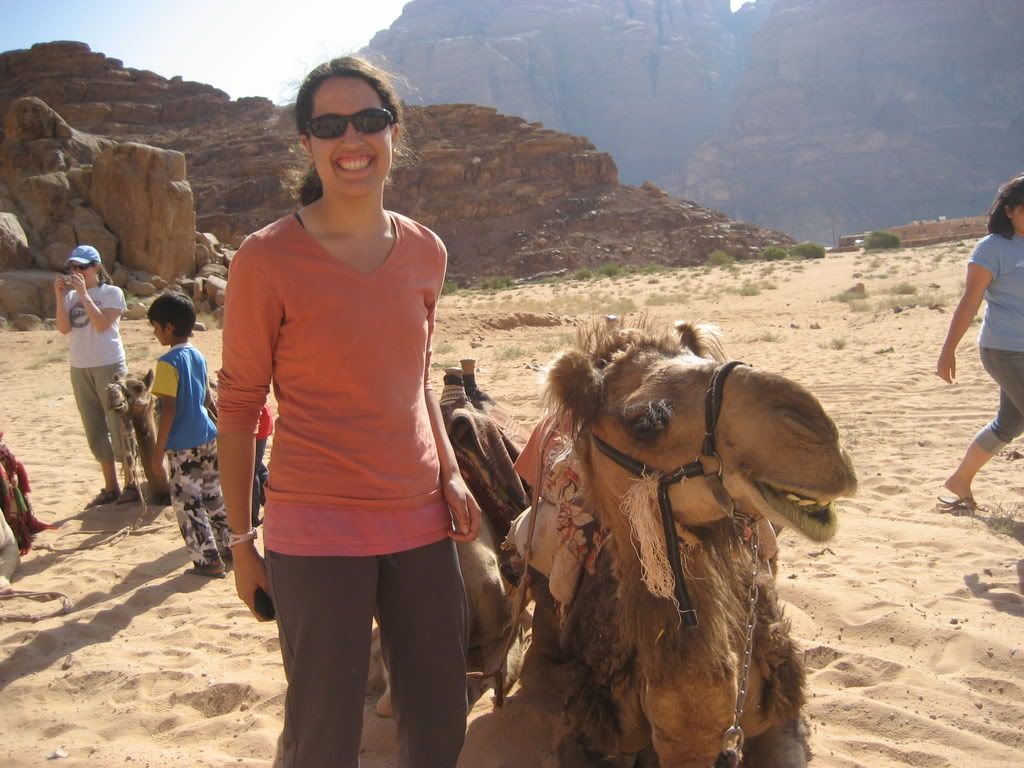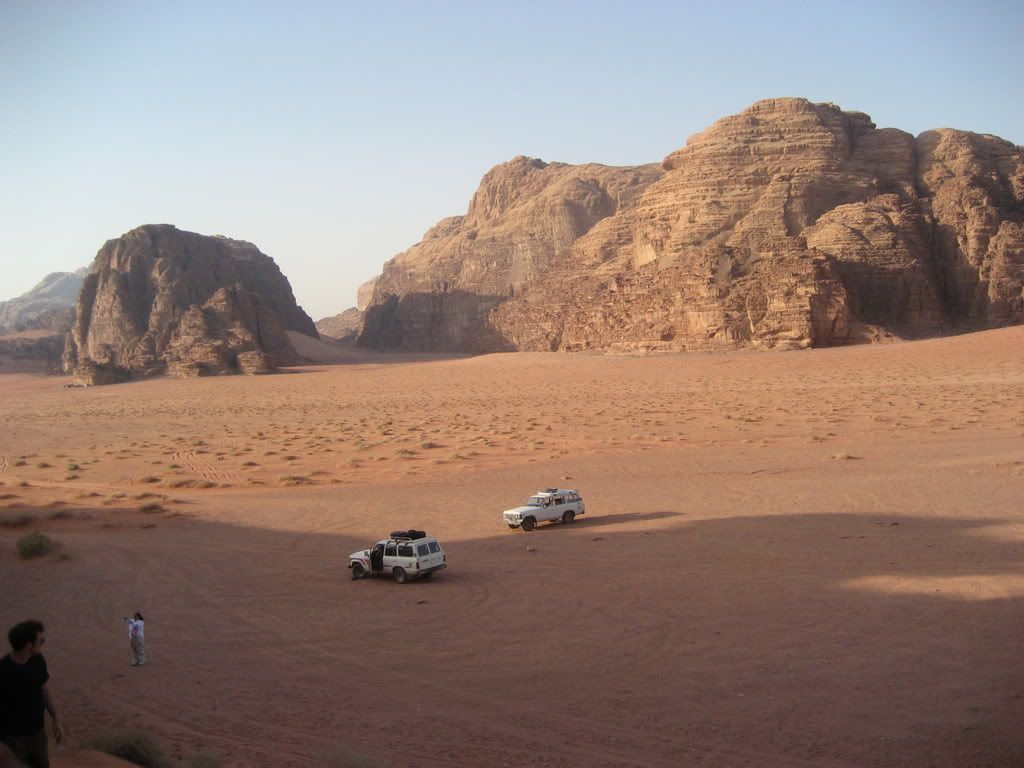



Before jumping into my trip to the south of Jordan, I’d like to begin by reflecting on my continuing adaptation, acceptance, and adjustment to Amman and the overlapping Arab, Middle Eastern, and Muslim worlds wherein Jordan lies. I’ve been exposed to a lot in a short amount of time, and writing about the some of the adjustments (a couple at a time) makes the adaptation and acceptance process a bit easier.
My adjustment to living in Amman has been new and exciting, but also much more challenging then I initially expected. Everywhere we go, people stop and stare. Whether it’s walking through campus, waiting for the bus, making a purchase in a store, or minding your own business, there’s also someone looking you up and down, watching your every move as you go by. This behavior isn’t limited to one particular group of people, either—men, women, and children of all ages will look you up and down as you go by (though usually it’s only the men who have something additional to add: often it’s just “Welcome to Jordan!” followed by a stream of Arabic, though I’ve also heard whistles, murmurs of “very nice” and once, applause when I went running on campus). I used to wonder what it would be like to be wildly popular, but it’s almost amusing how people find us so interesting or attractive in the same four or five shirts and baggy pants when most of the local young women are very stylishly dressed—very covered, many wear jeans tighter then anything I personally own, and expensive brand-name clothing, complete with heels and a matching hijab. Who knew?
Many people also assume that since we are Americans, we are 1) loaded and 2) gullible. The concept of receiving change doesn’t seem to exist in much of Amman. Breaking a five and even a one JD bill here is a source of great exasperation to many taxi drivers and restaurant owners. People will tell you they just don’t have any change, which is hard to believe when you peek around the register and there’s a till full of coins and smaller bills.
However, I must emphasize that despite the no-change and staring incidents, there are so many good people in Jordan who are overwhelmingly friendly and generous. I’ve been offered samples at almost every bakery and coffee shop I’ve visited, and shopkeepers are often happy to give you a discount to thank you for coming. This is not to say that people have to give me free stuff, otherwise they're rubberneckers, but the fabled Arab hospitality is alive and well. My professor taught me how to make Turkish coffee, and I’ve been practicing with coffee from a local shop. I’m hoping to buy my own Turkish coffee set before I leave so I can make it at home in the States, and yes, I’ve bought some tea here as well .
Now, the trip to South Jordan: Carla, a grad student who is traveling with our program but taking different classes at UJ, took the initiative to plan a trip to Wadi Rum and Aqaba this past weekend. Everyone in the Women’s Studies program, plus two of Carla’s friends from her fusha (classical Arabic) class ended up going together. This made the transportation portion of the trip difficult at times, but for the sights we saw, the hassles at bus depots and with taxi drivers made the delays worth it.
Wadi Rum is a desert in the south of Jordan, popularized through the history’s famous and somewhat romanticized T.E. Lawrence (“Lawrence of Arabia”) during the early 20th century and the later film “Lawrence of Arabia” with Peter O’Toole and Omar Sharif. It is also one of the most beautiful and amazing natural sights I have ever seen. We had been on the road for a couple hours on Thursday when we rounded a bend and came upon Rum. The vast expanses red sands, towering natural rock formations, and clear blue skies were picture perfect—I only hope my amateur photography skills did the landscape some justice so you can see the beauty of the desert yourself!
We met our Bedouin hosts at the gate to the protected area of Wadi Rum, and took 4WD Jeeps for an afternoon/sunset tour of the desert to get to our campsite for the evening. The drivers brought us to several great stops in the desert where we took pictures and climbed formations that would be without a doubt off-limits in the U.S. We watched the sun set on a sand dune, bathing the desert in a light that turned the entire area shades of red, pink, and orange. We then went to our camp, which consisted of 4 or 5 large tents and a rough outhouse facility. We were served tea in the main tent where the Bedouin played music on tribal drums and instruments and danced. They invited us to join in—obviously taking a break from true Bedouin cultural norms, but fun nonetheless. Dinner was—in a word—overabundant. I can’t begin to name the different overflowing dishes we had, but everyone ate their fill and, once stuffed, was ready for bed.
Since it was a nice night, we were given the option to sleep outside under the stars. There was some flat rock near the tents, so we dragged our mattresses and blankets and hunkered down for the night. The desert at night is just as beautiful as during the day—there is no light from cities or other sources for miles, so the night sky is bright and beautiful, with thousands of stars. The moon wasn’t out when we went to sleep at about 10:30, but it woke me up during the night as a bright blurry orb directly overhead. I woke up at 5:25 am, and the sun was already rising. The desert at sunrise is (you guessed it!) gorgeous as well. We had a brief breakfast shortly after 6:00 am and then went in to Rum village for camel rides.
I can’t think of any activity that compares to riding a camel. We all had a shock the first time we mounted. You mount a camel while it is sitting—easy enough. However, it gets up two legs at a time, so you are lurched backwards and then forwards while rising several feet in the air! Getting off a camel, in my opinion, is much scarier---you lurch forward and feel like you’re about to fall off, and then you drop backwards as the camel lowers its back legs to the sitting position. The Bedouin laughed good-naturedly at our surprise as they took us around, although some of the littler children leading the camels (nothing makes you realize you’ve had a sheltered childhood until a 4 or 5-year old boy leads you on a camel) had trouble containing their giggles.
After the camels, we called for taxis to take us to Aqaba, Jordan’s only port city, which is about an hour away from Wadi Rum. I don’t mean to sound like a sap, but I kept turning around to get one last glimpse (and then one last-last glimpse) of the desert. It’s someplace that I think I’d like to explore more thoroughly one day, and I can’t wait to explore other parts of Jordan’s natural landscape.
I think I will update about Aqaba and other adaptations, etc. in the next post. Thanks for reading this far!
